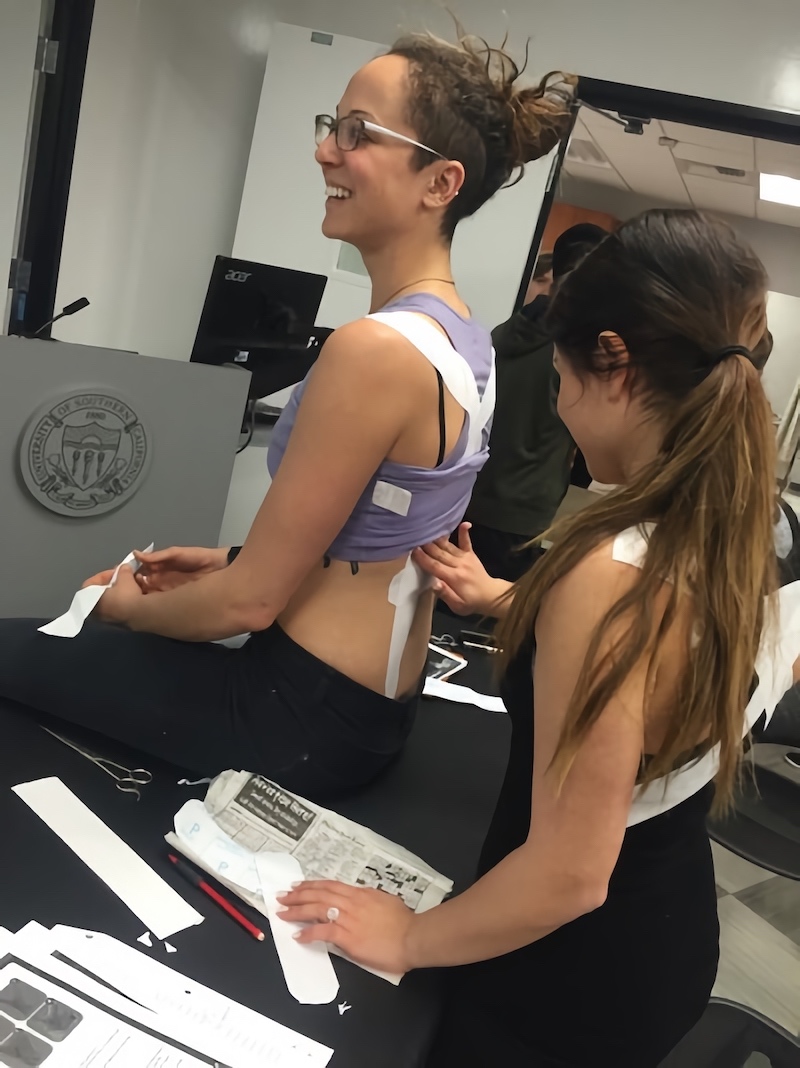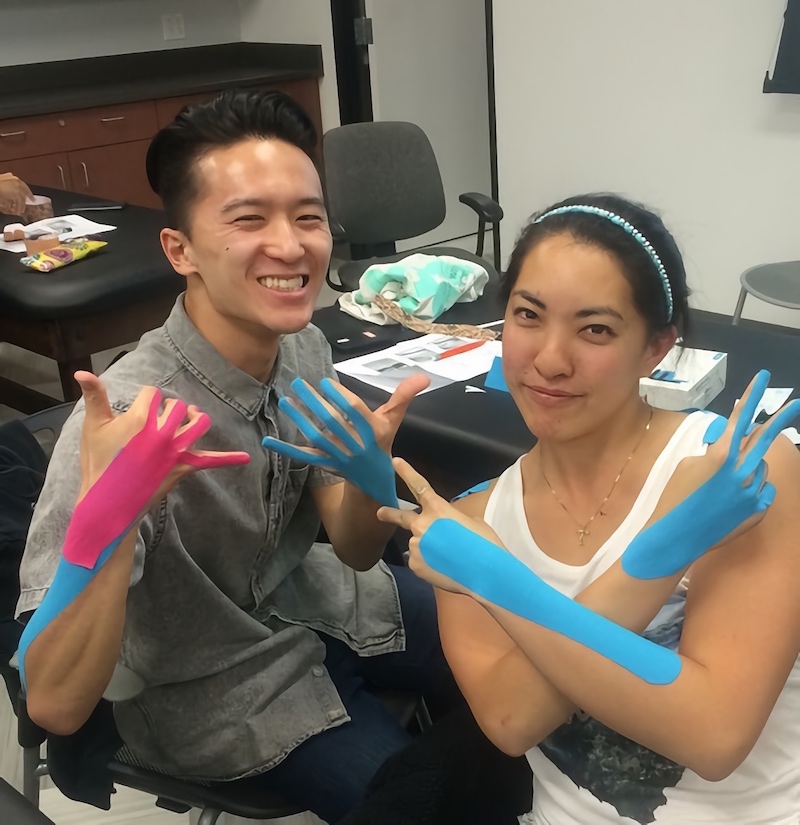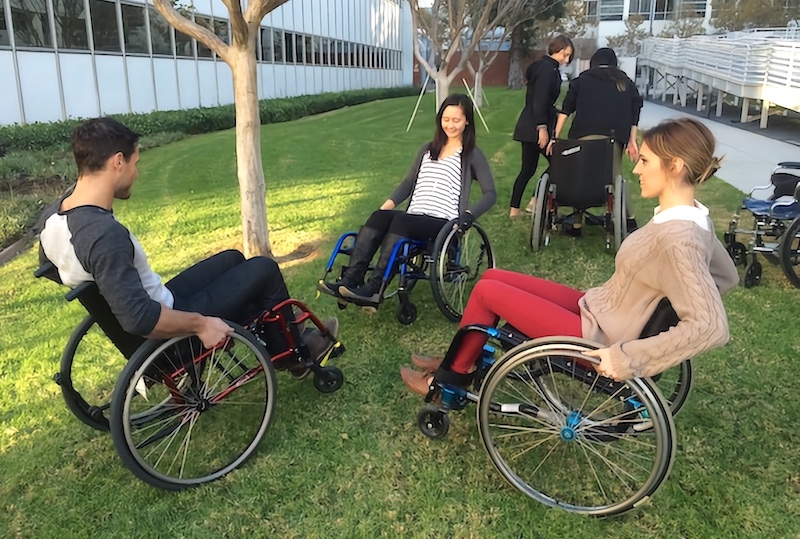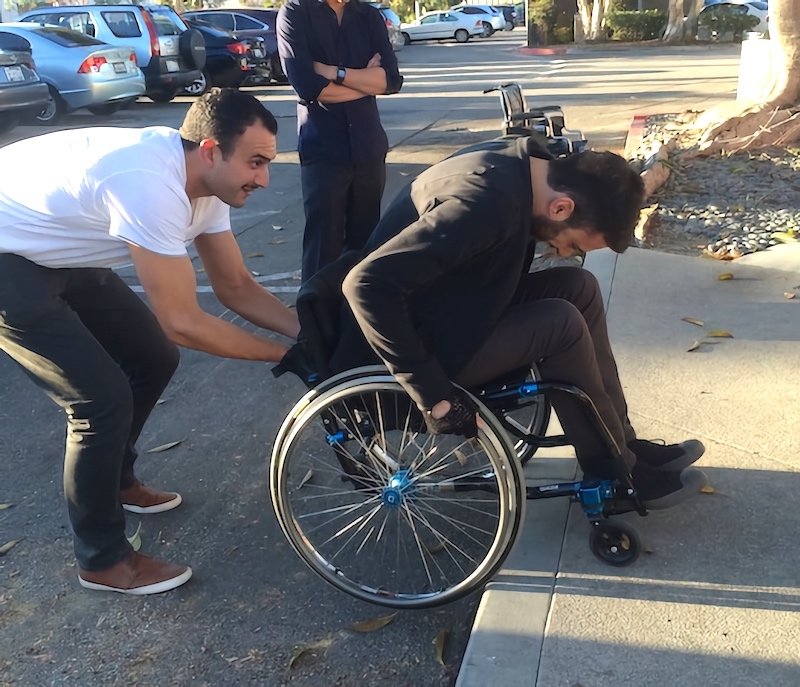Student Blog
What are OS/OT?

Hands-On Learning! ⟩
February 4, 2016, by Jodie
Classes What are OS/OT?
This semester I am taking Occupation-Based Adult Neurorehabilitation, Hand Rehabilitation and Occupational Therapy in Acute Care as my elective courses. Although we are only four weeks into this semester, I have already learned so much and am fascinated by all my classes! Each elective course provides such a comprehensive review of the course topics and allows for very hands-on learning opportunities. Throughout our program we get to see course content applied in practice through both our Level I and Level II fieldwork experiences however, this semester we get to apply course concepts on ourselves and our classmates and really hone in on our skills as practitioners before we graduate!
In my acute care class, we have the opportunity to shadow occupational therapists at Keck Hospital of USC, our world-renowned academic medical center. These clinical experiences coincide with lecture content and significantly enhance the learning experience. In my occupation-based adult neurorehabilitation class, we have both a lecture and lab portion. During lab, we get very hands-on practicing various neurorehabilitation techniques that we learn in class that day. Again, this opportunity to practice what we’re learning and clinically apply concepts from lecture has really made this semester so enjoyable and enriching. This week in neurorehab class, we practiced kinesiotaping and dynamic taping techniques on each other. Here are a few pictures from all the fun we had while learning and practicing this technique!

Classmate applying kinesiotape on another classmate!

Another classmate applying kinesiotape on a classmate!

How did we do!?

Nick and Rashelle with Kinesio Tape
How did we do??
⋯

New Year, New You ⟩
January 22, 2016, by Joe
Classes What are OS/OT?
It’s the start of my last semester in the MA program, and in some ways it feels totally new.
One of the unique parts of our program is that during this final semester, we get to take electives in addition to the required leadership & occupational science course. A lot of my classmates are using this opportunity to get started on specializations and certifications, such as fellow ambassador Heather who is immersed in hand therapy courses.
I’m a bit more eclectic in my approach . . .
Therapeutic Communication for the Healthcare Practitioner
I’m loving this experiential training course for learning Motivational Interviewing (MI), a really powerful communication tool to help clients settle ambivalence and motivate them towards behavior change. We spend a lot of time in class actually practicing MI skills, which has been so helpful that I find myself using it even among my friends.
Lifestyle Redesign
I came to USC OT because of my interest in helping people live better, healthier lives through changing their habits & routines. Lifestyle Redesign is a signature practice of USC, and I feel really shows the power of OT in helping people sustain a healthy lifestyle. We are paired with a partner for the semester to use the Lifestyle Redesign intervention approach. I’m really excited for both myself and my dear friend & fellow ambassador Rashelle will come out of the semester with even healthier lifestyles as well as strong Lifestyle Redesign skills.
Independent Study Project
I’m also working with Dr. Jenny Martinez on developing a diversity-related initiative with two of my classmates;we’ve only had one planning meeting so far, but our goal is to develop a project to support “best practices” with clients of diverse backgrounds.
Social Entrepreneurship
For our electives, we can take some courses outside of OT, so I elected to take a course from the Master’s of Business Administration program. Social Entrepreneurship essentially looks at how to develop a business model to address social change in social justice, environmental, and/or healthcare fields (or more!). So far, it’s been one of my most exciting classes, and I’ve been generating so many ideas on different ways to deliver healthcare services, and ways non-profit and for-profit models can balance each other for greater social good.
It’s an exciting semester! I can’t believe the program is almost done!
⋯

Ellen Loves Occupational Therapy ⟩
January 12, 2016, by Ariel
Videos What are OS/OT?
Hey guess what! Ellen Degeneres gave a shout out (and a whole lotta love) to occupational therapy on her talk show the other day.
Meet Ashlyn: Ashlyn works as an occupational therapist in one of the nation’s most poverty-stricken counties, and is making an amazing difference with her positive energy and generous spirit.
”. . . these kids make it so worthwhile. The best part of my job would have to be helping these kids and putting a smile on their face, knowing that I’m helping and making a difference. That is the most amazing thing.”
Happy Tuesday everyone!
⋯

Hellooo Electives! ⟩
January 12, 2016, by Ariel
Classes What are OS/OT?
Aaaand we’re back! Everyone’s getting back into the swing of things now that winter break is over. For second year students, this means ELECTIVES! For our final semester, we’re given the opportunity to choose classes from the OT department, or even look outside of the department to create our own focus. As an aspiring pediatric occupational therapist, I’ve chosen to take electives that will give me a stronger background in early intervention, sensory integration, and dysphagia. Here’s a little about the elective courses I’ve chosen for this semester.
Early Intervention
In early intervention, we will learn how occupational therapists treat babies and toddlers with developmental delays or disabilities. We’ll be learning how to help children attain brand-new skills ranging from physical, cognitive, communication, social/emotional, and self-help.
Sensory Integration
In our sensory integration courses, we’ll be learning how to help children process sensory information efficiently in order to learn, move, and interact appropriately with their environments. What is sensory integration? The basic principle is that we are constantly receiving sensory information from our environments in the form of sights, smells, sounds, tastes, gravity, etc. All of these different senses must be registering in our brains correctly in order for us to receive the information and respond appropriately (e.g., the pan feels hot, so I will respond by removing my hand). For many of us, this process occurs without us having to even think about it! But for others, integrating the senses is a challenge. For these children, occupational therapists use different types of sensory input to challenge their patients’ nervous systems and help them better process information from their environments. The end goal is for the child to be able to move efficiently, learn, and live a happy and full life!
Dysphagia
In our dysphagia course, we will be learning how to help patients who have difficulty swallowing foods, liquids, or medicine. The inability to swallow negatively impacts overall health, nutrition, and quality of life. Occupational therapists treat patients with dysphagia by using compensatory strategies, encouraging modified diets, introducing patients to adaptive utensils, teaching proper positioning, and providing exercises prior to mealtime that enhance safety and swallowing abilities.
For more information on Electives through the USC OT department, check out our curriculum here!
⋯

Wheelchair Mobility Creating Real Accessibility ⟩
November 22, 2015, by Rashelle
Classes What are OS/OT?
As an occupational therapist, we may have the opportunity to order wheelchairs for people after completing a thorough evaluation of them. When deciding what type of wheelchair to order, we analyze a person’s engagement in activities, current abilities, and desires for mobility. We also provide education to clients on how to best utilize their wheelchair in order to maximize their participation in daily activities (e.g., home and community mobility). Last week, we were fortunate enough to receive a lesson from an expert wheel chair maneuverer.

He taught us how to pop epic “wheelies” to get over road bumps, how to conserve energy while going up ramps, and how to courageously (yet safely!) back up over curbs.

These lessons not only taught me basic techniques, but also the immensity of strength needed, both physically and mentally, to successfully overcome barriers of accessibility. It was inspiring to say the least, to hear about our guest speaker’s involvement in a nationally competitive wheelchair rugby team, living perfectly on his own, and even driving himself away in his inconspicuous, yet highly adapted car. The individuals that are able to master wheelchair mobility, in order to live independently and happily, are the true superstars of society!
⋯





